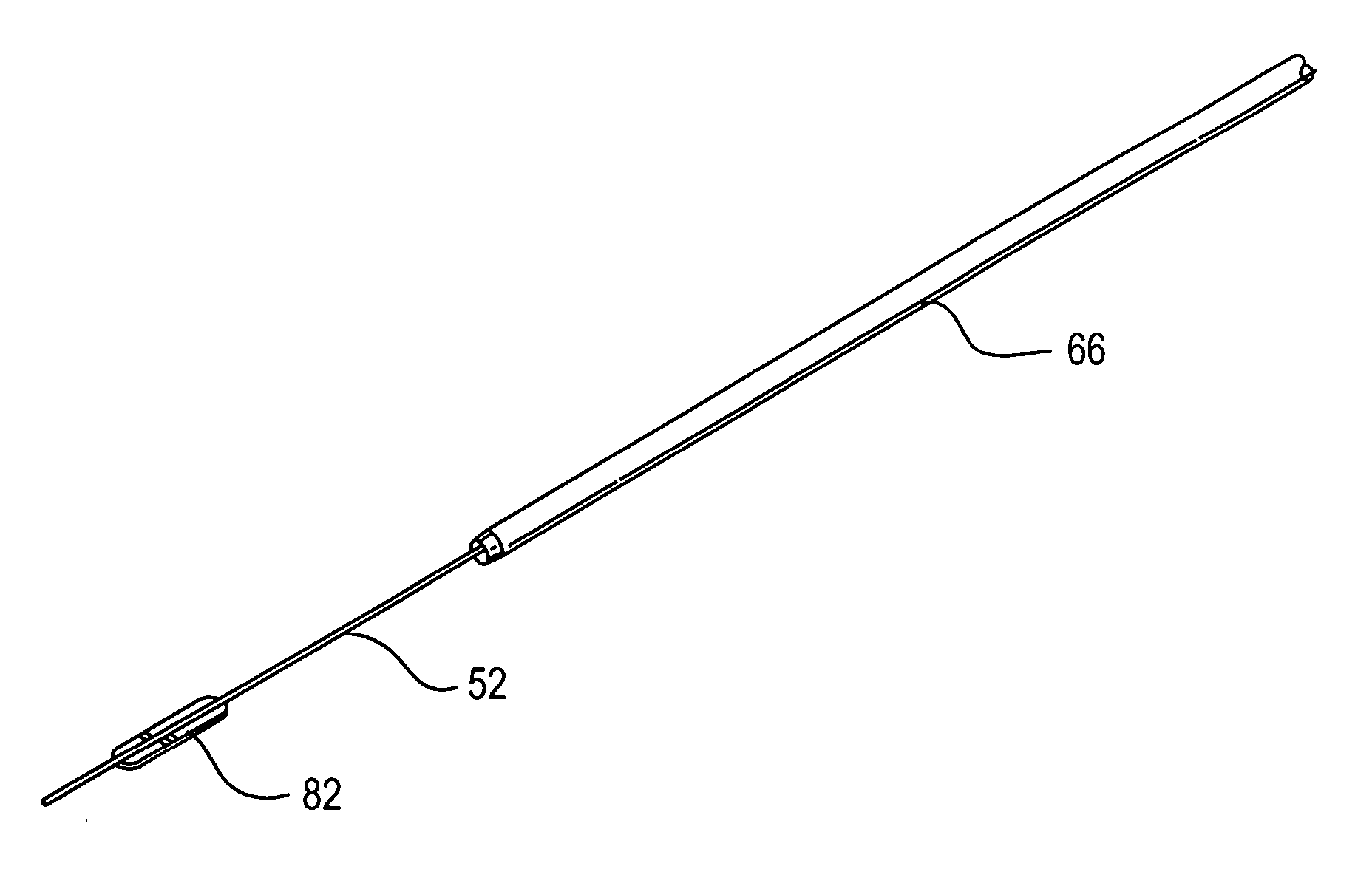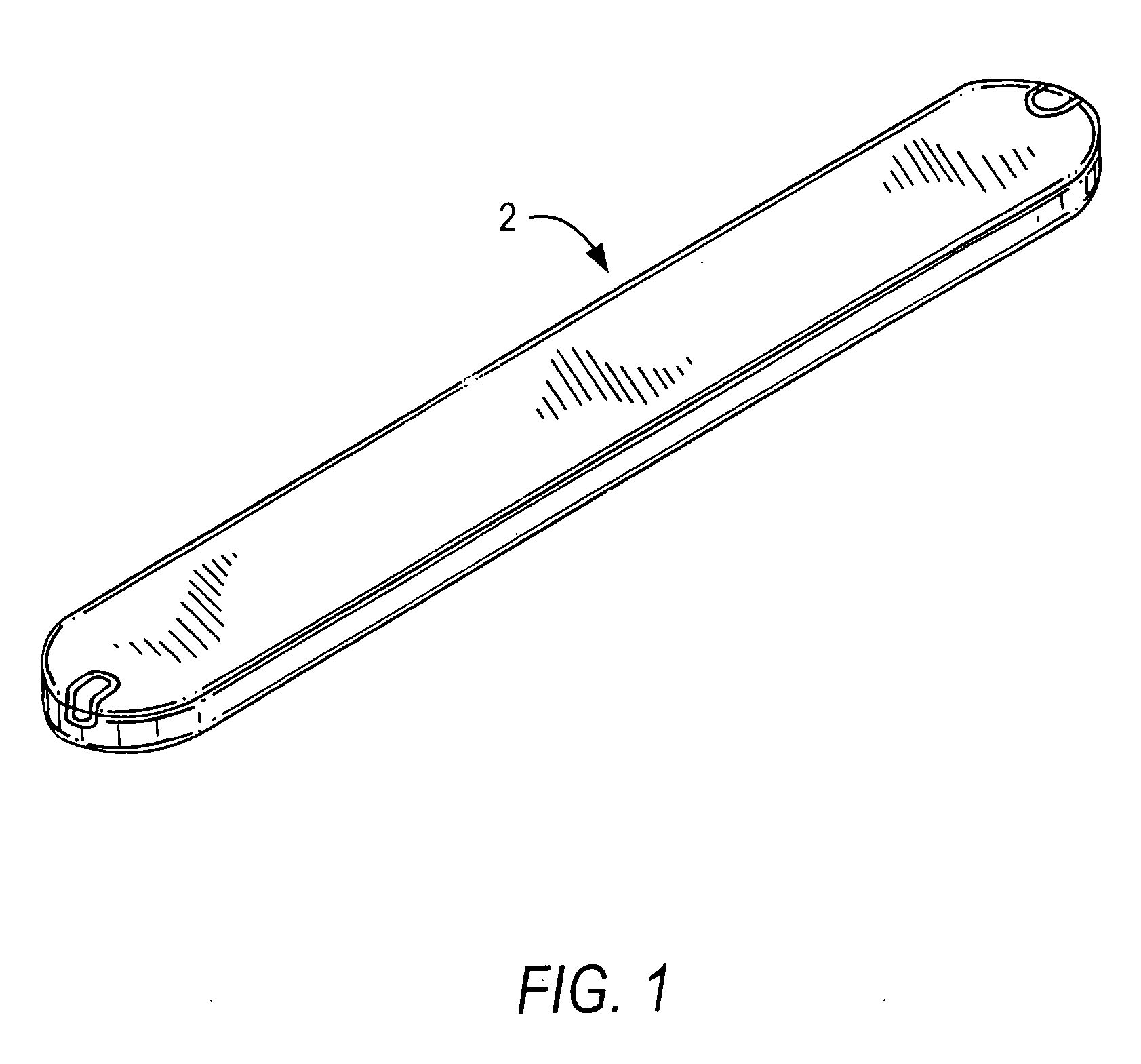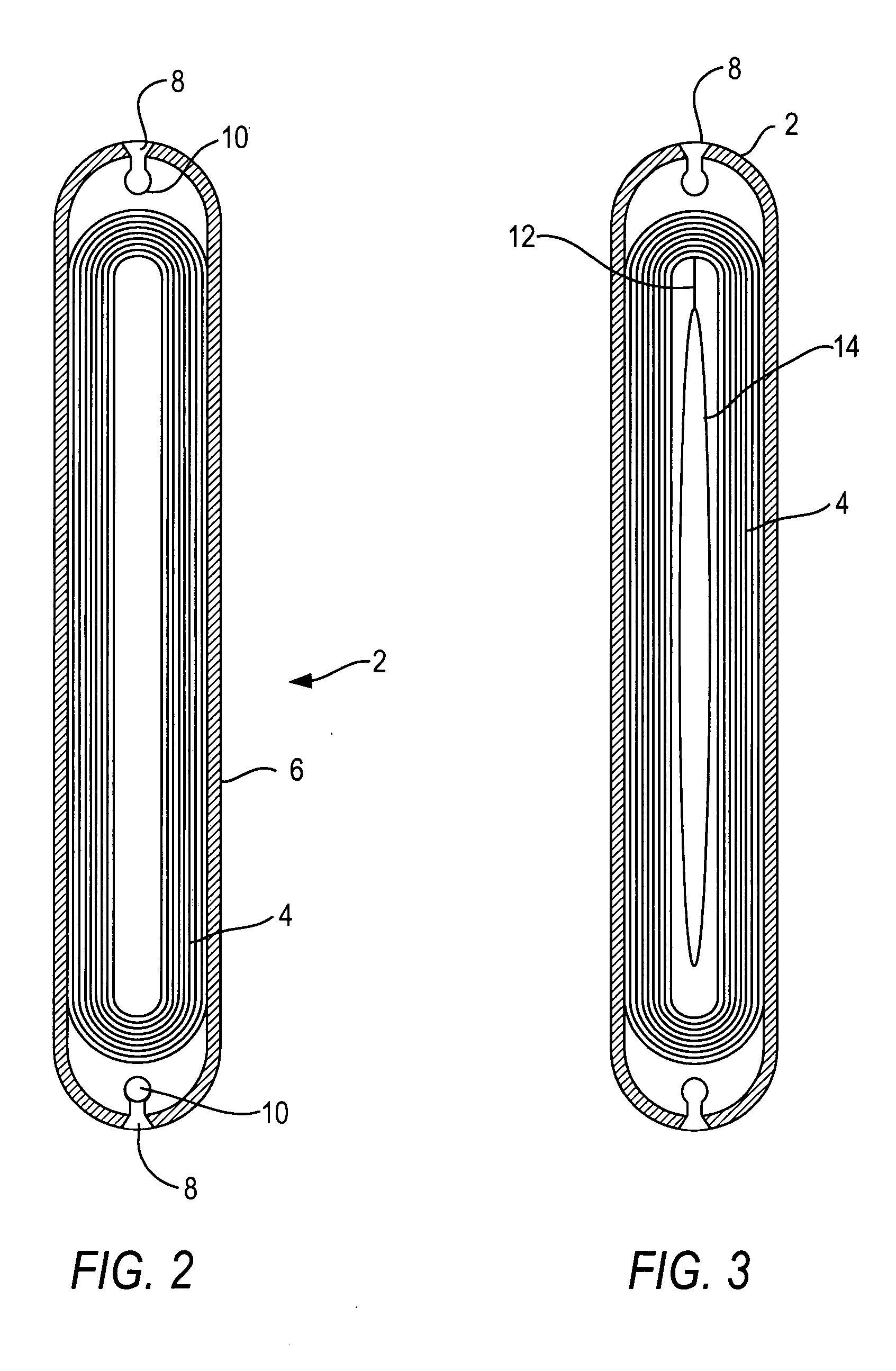Implantable wireless sensor
a wireless sensor and wireless sensor technology, applied in the field of implantable wireless sensors, can solve the problems of high patient injury risk, leakage, aortic rupture and sudden death, etc., and achieve the effects of preventing adhesion of biological substances, preventing leakage, and being accurate and precis
- Summary
- Abstract
- Description
- Claims
- Application Information
AI Technical Summary
Benefits of technology
Problems solved by technology
Method used
Image
Examples
Embodiment Construction
[0035] The invention can perhaps be better understood by referring to the drawings. FIG. 1 is an oblique, perspective view of a sensor 2, an embodiment of the invention. Sensor 2 preferably has an outer coating of biocompatible silicone.
[0036]FIG. 2 is a top, partial cross-section of a schematic representation of sensor 2 where a wire spiral inductor coil 4 is positioned in planar fashion in a substrate 6. Optionally sensor 2 may have recesses 8, each with a hole 10, to receive a tether wire (not shown here) for delivery of the device into a human patient, as described below.
[0037] In the embodiment of the invention shown in FIG. 3, a wire 12 connects coil 4 to a capacitor plate 14 positioned within coil 4.
[0038]FIG. 4 is a slightly oblique cross-section across its width of the embodiment of the invention shown in FIG. 2, where it can be seen that sensor 2 is comprised of a lower substrate 20 and an upper substrate 22. Lower substrate 20 and upper substrate 22 are constructed fro...
PUM
| Property | Measurement | Unit |
|---|---|---|
| thick | aaaaa | aaaaa |
| thick | aaaaa | aaaaa |
| thickness | aaaaa | aaaaa |
Abstract
Description
Claims
Application Information
 Login to View More
Login to View More - R&D
- Intellectual Property
- Life Sciences
- Materials
- Tech Scout
- Unparalleled Data Quality
- Higher Quality Content
- 60% Fewer Hallucinations
Browse by: Latest US Patents, China's latest patents, Technical Efficacy Thesaurus, Application Domain, Technology Topic, Popular Technical Reports.
© 2025 PatSnap. All rights reserved.Legal|Privacy policy|Modern Slavery Act Transparency Statement|Sitemap|About US| Contact US: help@patsnap.com



